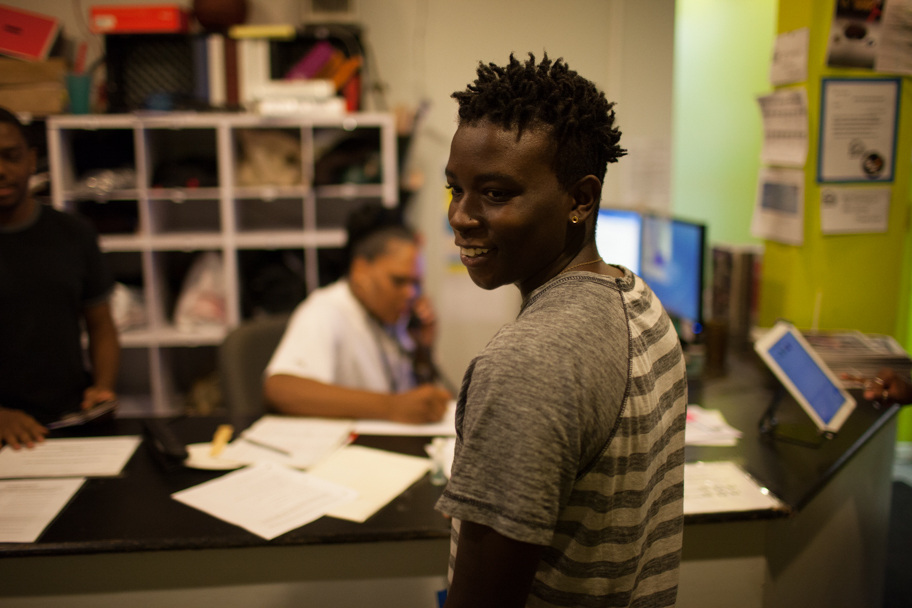
For fourteen years, Child Life Specialist Maureen has played I Spy, Skip-Bo and blown bubbles in the name of providing clarity, comfort and normalcy to hospitalized children of all ages and diagnosis. She has worked to build relationships with them and their families, helping all to understand procedures, conditions and talk through the “what-ifs.”
We recently tagged along on a shift with Maureen at Children’s Hospital of Michigan. The Children’s Foundation supports Child Life Services at Children’s Hospital of Michigan with annual grant funding so that Maureen and her colleagues can provide important support engaging children in medical play and recreational activities as well as providing emotional support and explanations, all while tailoring the approach to meet the needs of each patient and family.
Case by case, we learned the profound impact a Child Life Specialist has on hospitalized children and their families. Here’s a look inside (*Patient names have been changed to protect identity):
For Part I of this story, click here.

12:44 p.m. – While checking her list of priority patients, Maureen gets a page in need of procedural support for a girl having her port accessed.
She arrives at six-year-old Josie’s room and speaks with the girl and Grandma, her caregiver, to build a quick rapport and learn what Josie’s current Child Life needs are. In attempt to promote control, Maureen asks if Josie would prefer to sit or lay for the procedure and allows her to choose from few distraction tools. She decides to lay and play with the iPad.
When the nurse enters the room, Maureen reminds Josie of her two most important jobs: breathing in like she was smelling his favorite food and breathing out like she was blowing bubbles. A few times during the procedure, Josie squints her eyes and makes tiny flinches. When this happens, Maureen coaches the deep breathing and makes conversation about the iPad game. Before they know it, the procedure is complete, but Maureen stays a bit longer to finish the game.

1:53 p.m. – As Maureen heads down the hall, she hears cries and moans. She peeks her head in the room where it’s coming from to see a girl about 11 years old in her bed grabbing her legs – Aida has sickle anemia and just received her pain medication.
Mom and nurse look at Maureen hoping for help, so she chats with the patient. Maureen asks Aida to rate the pain from zero to 10. Aida says it is at a 10 and together, they take big deep breaths. Eventually Aida relaxes. In effort to distract her from the pain until the medicine starts working, Maureen asks if she wants to play LEGOs. Aida lights up and explains she and her brother have a huge collection of LEGOs.
Twenty-five minutes later, Maureen asks Aida again to rate her pain. This time it is a 4/10. Aida admits, since they started playing, she hasn’t given much thought to her legs.

2:55 p.m. – Five-year old Emma* is Maureen’s last patient of the day; she is scheduled to have a tonsillectomy next week. This is Emma’s first surgery and because she is sensory-sensitive, a tour is especially important. Along with Mom, Maureen and Emma start their 30-minute walk-through to prepare Emma for what would happen the day of surgery. Maureen specifically focused on the different sensory experiences that could trigger Emma: a beeping sound of the scale, squeeze of the blood pressure cuff, bright lights of the room. She spoke with Emma about each of these on a child-friendly level. By the end of the tour, both Emma and Mom felt comfortable, confident and relieved about what was to come.
3:38 p.m. – At this point, Maureen heads back to her office. She checks e-mail then charts for her afternoon patients and notes the number of patients she saw, types of interventions and outcomes. She turns off her phone and pager, removes her badge and jacket, and changes out of her shoes. Each of these steps helps to “leave work at work” – something she considers important to her mental health after dealing with stressful situations all day.
4:03 p.m. – Excited to decompress at the gym, Maureen makes her way to the parking garage. She gets in her car and turns on her favorite True Crime podcast – the best way she can think of to reset herself so she can return for her next shift and provide for high level care to patients.
For Part I of this story, click here.





